 August 27, 2020 John E. Ross, KD8IDJ, Editor
| ||||||
Board of Directors Elects New ARRL CEO David Minster, NA2AA The ARRL Board of Directors has elected David Minster, NA2AA, of Wayne, New Jersey, as ARRL's new Chief Executive Officer, starting on September 28. Minster is currently Managing Partner at Talentrian Partners, a management consulting firm serving the consumer goods and luxury goods industries. Minster began his career as a software engineer, moving into management at Unilever, as a Chief Information Officer of this globally recognized portfolio of brands that includes Elizabeth Arden Company, "Building a culture of accomplishment and accountability is what I do best," he said. "My initial focus will be working with the Board on establishing strategic goals and concrete plans to navigate ARRL through the digital transformation required for the coming decades of its Second Century. This includes exciting and innovative ways to be engaged in amateur radio, while growing activity and membership." Minster got his Novice license, WB2MAE, in 1977, when he was in his teens. He progressed from Advanced to Amateur Extra and, after a stint as NW2D, he settled on the vanity call sign NA2AA in the 1990s as a way to honor a mentor, N2AA, and the contest station that he used to frequent, K2GL, in Tuxedo Park, New York. Minster's ham radio pursuits have ranged far and wide over the years. His background includes National Traffic System training and participation in public service events, as well as contesting from home, club stations, and contest stations in the Caribbean -- particularly on Bonaire, where he is a member of PJ4G. Primarily a CW operator, Minster collects unique and vintage bugs and keys. Minster earned a bachelor's degree in computer engineering from The Ohio State University and has a special interest in satellites, digital communications, remote operation, and ham radio computing and software. He has written keyer software for the commercial market, and contest logging, packet, and satellite telemetry software for personal use. In addition to being an ARRL member, Minster is a member of AMSAT, the Frankford Radio Club, the Straight Key Century Club, CWops, and the North American QRP CW Club. "I spend every day of my life, one way or another, engaged in amateur radio. It is more than just a hobby for me; it is my community. It is where I live; where I have built lifelong friendships, and friendships that span the globe. Amateur radio allows me to dream and to experiment. I can't wait to bring my energy and boundless enthusiasm in service to ARRL." ARRL President Rick Roderick, K5UR, said, "We are excited to welcome David as our new CEO, and look forward to his progressive leadership. His experience in management and operations, plus his activities in amateur radio, will serve our organization and members well." Minster will succeed Barry J. Shelley, N1VXY, who was CEO in 2018, and who has been serving as ARRL's Interim CEO since January 2020. Shelley had been ARRL's Chief Financial Officer since January 1992. Amateur Radio Volunteers Ready as Deadly Hurricane Laura Makes Landfall Amateur Radio Emergency Service (ARES®) teams along the Gulf Coast were ready to assist as needed after Hurricane Laura made landfall as a powerful and deadly Category 4 storm along the Texas-Louisiana border with sustained winds of 150 MPH. The National Hurricane Center (NHC) predicted "unsurvivable storm surge" was in the vicinity of 20 feet or greater, driving Gulf waters inland into waterways and lowlands. More than a half-million people in Louisiana "Once Laura has been downgraded to a Tropical Storm, we will focus on helping to gather any post-storm reports from the areas that had been hit," HWN Manager Bobby Graves, KB5HAV, said. "This includes the relaying of any emergency or priority traffic." At mid-week, ARRL South Texas Section Emergency Coordinator Jeffery Walter, KE5FGA, said, "We have begun nightly Zoom meetings with North Texas, South Texas, and ARRL Delta Division leadership. The areas directly in the path of the storm may call for mutual aid support." He assured that volunteers would be vetted and provided with necessary information and a plan put in place to define their deployment period. The FCC has granted an ARRL request for a 30-day waiver to facilitate relief communications in the wake of Hurricane Laura. The waiver At 1200 UTC on Thursday, the NHC was reporting damaging winds and flooding rainfall overspreading inland areas in western and central Louisiana. "Life-threatening storm surge continues along much of the Louisiana coastline," the report added. The storm was still packing 100 MPH winds. Laura was moving toward the north and that motion was expected to continue through the day. A northeastward to east-northeastward motion was expected Thursday night and Friday. Laura was predicted to move across southwestern Louisiana Thursday morning, and then continue northward across the state through the afternoon, with the storm's center forecast to move over Arkansas Thursday night, the mid-Mississippi Valley on Friday, and the mid-Atlantic states on Saturday. Voice over Internet Protocol Weather Net (VoIP-WX) Manager Rob Macedo, KD1CY, was interviewed on The Weather Channel on Thursday morning. In Louisiana and Texas, ARES teams were in standby status for local emergency managers or served agencies, such as the Red Cross, to request activation. Louisiana Section Emergency Coordinator (SEC) James Coleman, AI5B, said earlier this week that activations would happen on a parish-by-parish or on a regional basis as support is needed. The Louisiana ARES Emergency Net activated on Wednesday on 3.878 and/or 7.255 MHz. The Delta Division Emergency Net was on standby Thursday. Ham Aid emergency communication kits from ARRL Headquarters have been pre-positioned in Louisiana for such situations since last year. ARRL South Texas Section Manager -- and incoming ARRL Director of Emergency Management -- Paul Gilbert, KE5ZW, was among those participating in an August 26 ARRL Headquarters Emergency Response Team (HQERT) Zoom meeting that also included Section leadership in Louisiana and Mississippi. ARES members were advised to stay in touch with Section Emergency Coordinators as well as district and local emergency coordinators for any activation plans, but consensus of those at the session was that volunteers would be needed. Gilbert stressed that ARES volunteers should not self-deploy. "Most staff members, including the HQERT, are working from home and communicating with each other via email and Microsoft Teams," ARRL Assistant Emergency Preparedness Manager Ken Bailey, K1FUG, said, adding that W1AW was ready if needed. NASA's THEMIS Mission Investigates Aurora Mysteries According to a NASA report, a special type of aurora, draped east-to-west across the night sky like a glowing pearl necklace, is helping scientists to better understand the science of auroras. Known as auroral beads, these lights often show up just before large auroral displays, which are caused by electrical storms in space called substorms. Previously, scientists weren't sure if auroral beads were But powerful new computer models combined with observations from NASA's Time History of Events and Macroscale Interactions during Substorms -- THEMIS -- mission have provided the first strong evidence of the events in space that lead to the appearance of these beads, and demonstrated the important role they play in our near space environment. "Now we know for certain that the formation of these beads is part of a process that precedes the triggering of a substorm in space," said Vassilis Angelopoulos, principal investigator of THEMIS at UCLA. "This is an important new piece of the puzzle."
By providing a broader picture than can be seen with the three THEMIS spacecraft or ground observations alone, the new models have shown that auroral beads are caused by turbulence in the plasma -- a fourth state of matter, made up of gaseous and highly conductive charged particles -- surrounding Earth. The results, recently published in Geophysical Research Letters and Journal of Geophysical Research: Space Physics, will ultimately help scientists better understand the full range of swirling structures seen in the auroras. "THEMIS observations have now revealed turbulences in space that cause flows seen lighting up the sky as of single pearls in the glowing auroral necklace," said Evgeny Panov, lead author on one of the new papers and THEMIS scientist at the Space Research Institute of the Austrian Academy of Sciences. "These turbulences in space are initially caused by lighter and more agile electrons, moving with the weight of particles 2,000 times heavier, and which theoretically may develop to full-scale auroral substorms." ARRL Podcasts Schedule
The On the Air and Eclectic Tech podcasts are sponsored by Icom. Both podcasts are available on iTunes (iOS) and Stitcher (Android), as well as on Blubrry -- On the Air | Eclectic Tech. Candidates Set for 2020 ARRL Division Elections The candidates for the 2020 ARRL Division elections are now official. ARRL members will choose between two candidates for Director in the Dakota and Great Lakes Divisions in this year's election cycle, and from among three candidates for Vice Director in the Great Lakes Division and between two candidates in the Midwest Division. In the Atlantic and Delta Divisions, incumbents are unopposed for both Director and Vice Director. In the Dakota Division, the sitting Vice Director is running unopposed, while in the Midwest Division, the current Vice Director is the only candidate for Director. Declared Elected Without Opposition
Contested Seats
Balloting for contested seats will take place this fall. Votes will be counted, and successful candidates announced, in November. ARRL Seeks National Club Coordinator ARRL is seeking a National Club Coordinator who will act as the primary point of contact for Section Affiliated Club Coordinators. Section Affiliated Club Coordinators work with clubs to foster and coordinate activities to promote recruiting and training of new radio amateurs, endorse ARRL membership, and impart a positive image of amateur radio within the community. In addition to maintaining lines of communication with Section Affiliated Club Coordinators, the National Club Coordinator will develop presentations for in-person audiences and electronic media. The
National Club Coordinator will also maintain affiliated club records and provide information and support to Affiliated Club Coordinators so they can assist clubs in keeping the ARRL affiliated club database current. This individual will also process applications from clubs seeking ARRL affiliation. The National Club Coordinator will design, write, and produce a newsletter and contribute content for QST, the ARRL website, and social media venues. The incumbent will also represent ARRL at amateur radio events, deliver presentations on the work of ARRL and the value of membership, and interact with members on behalf of the organization. The successful candidate will be able to conduct business in a professional manner, effectively represent ARRL at amateur radio events, and maintain productive working relationships and open communication between staff and the Field Organization. He or she will have at least 3 years of similar or related experience; past service as a club officer is a plus. Applicants should have a 2- or 4-year college degree or possess job-specific skills acquired through on-the-job training or an apprenticeship. The ideal candidate will exhibit courtesy, tact, and diplomacy on the job and be able to build relationships and solicit cooperation both within and outside the organization. Other skills include a working knowledge of Microsoft Office, desktop applications, online videoconferencing tools, and managing social media platforms. For complete information on this opening, see the full job description, which includes instructions on how to submit a resume. The K7RA Solar Update Tad Cook, K7RA, Seattle, reports: Our closest star seems to have quieted again. We have now experienced 6 consecutive days with no sunspots at all. The average daily sunspot number dropped from 5.4 to 1.9 this week, and average daily solar flux declined from 71 to 70.4. Geomagnetic indicators increased marginally, with average daily planetary A index going from 4.4 to 5.1, and average middle latitude A index from 5 to 6.
Predicted planetary A index is 8 on August 27 - 28; 10, 12, and 12 on August 29 - 31; 8 on September 1; 5 on September 2 - 17; 8 on September 18 - 19; 10, 15, and 10 on September 20 - 22; 5, 10, 12, and 18 on September 23 - 26; 15 on September 27 - 28; 12 on September 29, and 5 on September 30 - October 10. Sunspot numbers for August 20 - 26 were 13, 0, 0, 0, 0, 0, and 0, with a mean of 1.9. The 10.7-centimeter flux was 69.9, 70.9, 70, 70.6, 70.3, 70.6, and 70.4, with a mean of 70.4. Estimated planetary A indices were 3, 4, 8, 7, 3, 4, and 7, with a mean of 5.1. Middle latitude A index was 4, 5, 13, 7, 3, 3, and 7, with a mean of 6. A comprehensive K7RA Solar Update is posted Fridays on the ARRL website. For more information concerning radio propagation, visit the ARRL Technical Information Service, read "What the Numbers Mean...," and check out K9LA's Propagation Page. A propagation bulletin archive is available. For customizable propagation charts, visit the VOACAP Online for Ham Radio website. Share your reports and observations. Just Ahead in Radiosport
See the ARRL Contest Calendar for more information. For in-depth reporting on amateur radio contesting, subscribe to The ARRL Contest Update via your ARRL member profile email preferences. Ham-Astronauts to Crew Boeing, SpaceX Commercial Missions for NASA Ham-astronauts abound among crew members assigned to pioneering commercial space missions by Boeing and SpaceX. Jeanette Epps, KF5QNU, is the latest astronaut assigned to the Boeing Starliner-1, a four-passenger vehicle that will undertake its first mission to the International Space Station (ISS) in 2021. Others on the crew will include veteran Sunita Williams, KD5PLB, and Josh Cassada, KI5CRH. Another crew member is yet to be named.
Epps, Williams, and Cassada will spend 6 months on the ISS. The flight will follow NASA certification after a successful uncrewed Orbital Flight Test-2 and Crew Flight Test with astronauts. The spaceflight will be the first for Epps and Cassada and the third for Williams, who spent long-duration tours on the ISS for Expeditions 14/15 and 32/33. NASA assigned Williams and Cassada to the Starliner-1 mission in August 2018. Four veteran astronauts are preparing to launch this fall on the SpaceX Crew 1 mission. They are Victor Glover, KI5BKC; Mike Hopkins, KF5LJG; Shannon Walker, KD5DXB, and Soichi Noguchi, KD5TVP, of the Japan Aerospace Exploration Agency (JAXA).
NASA and SpaceX are targeting no earlier than October 23 for the first operational flight with astronauts of the Crew Dragon spacecraft and Falcon 9 rocket as part of the agency's Commercial Crew Program. The SpaceX Crew-1 mission will be the first regular rotational mission to the space station following completion of NASA certification. Astronauts Bob Behnken, KE5GGX, and Doug Hurley traveled to the ISS on a SpaceX Crew Dragon in late May, marking the first time that humans traveled aloft via a commercial spacecraft.
NASA's Commercial Crew Program is working with the US aerospace industry as companies develop and operate a new generation of spacecraft and launch systems capable of carrying crews to low-Earth orbit and to the space station. Commercial transportation to and from the station will provide expanded utility, additional research time, and broader opportunities for discovery on the orbital outpost, NASA says. "As commercial companies focus on providing human transportation services to and from low-Earth orbit, NASA will concentrate its focus on building spacecraft and rockets for deep-space missions," the space agency said. Some of the ham-astronauts will be available for ham radio contacts from the ISS with schools and educational groups via the Amateur Radio on the International Space Station (ARISS) program. Announcements
In Brief...
Upcoming ARRL Section, State, and Division Conventions Note: Many conventions and hamfests have been canceled or postponed due to the coronavirus pandemic. Check the calendar of canceled events on the ARRL website.
Find conventions and hamfests in your area. ARRL -- Your One-Stop Resource for . .
Subscribe to...
Free of charge to ARRL members...
| ||||||
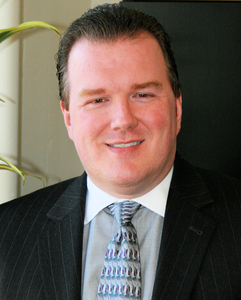 Chesebrough-Ponds Canada, Thomas J. Lipton Co., and others. From there, he moved to fine jewelry manufacturer and retailer David Yurman, where he served as COO and CIO. More recently, Minster served as CEO of jewelry brands Scott Kay and Judith Ripka.
Chesebrough-Ponds Canada, Thomas J. Lipton Co., and others. From there, he moved to fine jewelry manufacturer and retailer David Yurman, where he served as COO and CIO. More recently, Minster served as CEO of jewelry brands Scott Kay and Judith Ripka.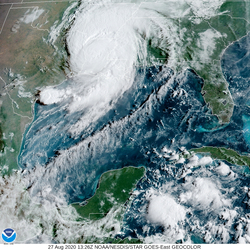 and Texas were told to evacuate ahead of the storm, but not everyone did -- or was able to leave. Widespread power outages were reported. By Thursday morning, the Hurricane Watch Net (HWN) had ratcheted its alert level up to 5 -- Catastrophic Response Mode -- and remained in operation even after the hurricane hit.
and Texas were told to evacuate ahead of the storm, but not everyone did -- or was able to leave. Widespread power outages were reported. By Thursday morning, the Hurricane Watch Net (HWN) had ratcheted its alert level up to 5 -- Catastrophic Response Mode -- and remained in operation even after the hurricane hit..jpg) temporarily permits amateur data transmissions at a higher symbol rate than currently permitted under the FCC's rules. ARRL pointed out in its request that Amateur Radio Emergency Service (ARES) members would be working with federal, state, and local emergency management officials to assist with disaster relief and may use radio modems capable of both PACTOR 3 and PACTOR 4 emissions. The higher data rates PACTOR 4 offers are critical to sending hurricane relief communications, including lists of needed and distributed supplies.
temporarily permits amateur data transmissions at a higher symbol rate than currently permitted under the FCC's rules. ARRL pointed out in its request that Amateur Radio Emergency Service (ARES) members would be working with federal, state, and local emergency management officials to assist with disaster relief and may use radio modems capable of both PACTOR 3 and PACTOR 4 emissions. The higher data rates PACTOR 4 offers are critical to sending hurricane relief communications, including lists of needed and distributed supplies.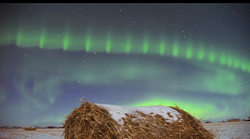 somehow connected to other auroral displays as a phenomenon in space that precedes substorms, or if they are caused by disturbances closer to Earth's atmosphere.
somehow connected to other auroral displays as a phenomenon in space that precedes substorms, or if they are caused by disturbances closer to Earth's atmosphere.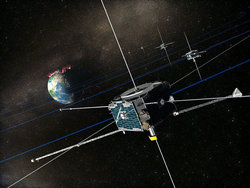
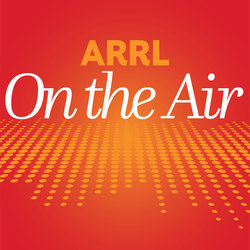 The latest episode of the On the Air podcast (Episode 8) features an interview with brothers Andy, KK4LWR, and Tony, KD8RTT, Milluzzi about the ARRL Collegiate Amateur Radio Initiative. The On the Air podcast is a monthly companion to On the Air magazine, ARRL's magazine for beginner-to-intermediate ham radio operators.
The latest episode of the On the Air podcast (Episode 8) features an interview with brothers Andy, KK4LWR, and Tony, KD8RTT, Milluzzi about the ARRL Collegiate Amateur Radio Initiative. The On the Air podcast is a monthly companion to On the Air magazine, ARRL's magazine for beginner-to-intermediate ham radio operators.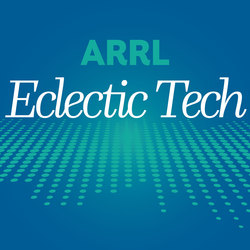 The latest episode of the Eclectic Tech podcast (Episode 15) features a chat with Bob Allison, WB1GCM, about HF transceiver shopping -- getting the best performance for the money.
The latest episode of the Eclectic Tech podcast (Episode 15) features a chat with Bob Allison, WB1GCM, about HF transceiver shopping -- getting the best performance for the money.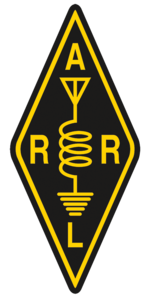 WB4RHQ, appointed in 2013.
WB4RHQ, appointed in 2013..jpg)
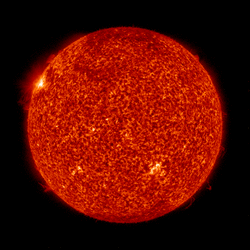 Predicted solar flux is 70 on August 27 - September 2; 71 on September 3; 72 on September 4 - 9; 71 on September 10 - 16; 70 on September 17 - 27; 71 on September 28 - 30; 72 on October 1 - 6, and 71 on October 7-10.
Predicted solar flux is 70 on August 27 - September 2; 71 on September 3; 72 on September 4 - 9; 71 on September 10 - 16; 70 on September 17 - 27; 71 on September 28 - 30; 72 on October 1 - 6, and 71 on October 7-10.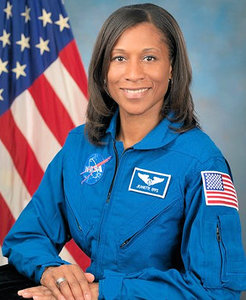
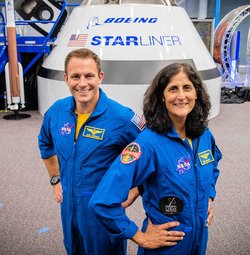

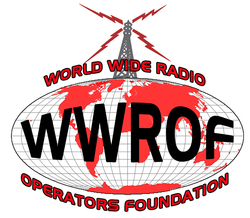 The World Wide Radio Operators Foundation (WWROF) has announced the election of 22-year-old Philipp Springer, DK6SP, to its Board of Directors, effective immediately. Springer is a member of the IARU Region 1 Youth Working Group and the Deutscher Amateur Radio Club (DARC), where he is responsible for leading activities for the Youngsters On The Air (YOTA) Team Germany program. He was a competitor at World Radio Team Championship (WRTC) 2018. At the same time, WWROF announced the departure of veteran board member Dennis Motschenbacher, K7BV.
The World Wide Radio Operators Foundation (WWROF) has announced the election of 22-year-old Philipp Springer, DK6SP, to its Board of Directors, effective immediately. Springer is a member of the IARU Region 1 Youth Working Group and the Deutscher Amateur Radio Club (DARC), where he is responsible for leading activities for the Youngsters On The Air (YOTA) Team Germany program. He was a competitor at World Radio Team Championship (WRTC) 2018. At the same time, WWROF announced the departure of veteran board member Dennis Motschenbacher, K7BV..jpg) Derecho Takes Down 1,200 Feet of Tower and 35 Yagis The popular contest station of Tony Radebaugh, N0NI, in Rippey, Iowa, lost some 1,200 feet of tower and 35 Yagis in the August 10 derecho event. Winds of 140 MPH or greater caused extensive property damage in some areas. "Trees falling on guy wires is what did me in," Radebaugh said. "Everything outside of the trees stayed up, including a three-element full-size 40-meter Yagi at 196 feet. A two-element 40-meter XM240 on the same tower snapped." The violent, fast-moving storm complex raked a 700-mile path from Nebraska to Indiana. Winds of more than 70 MPH hit Chicago, and more than 300,000 lost power. Iowa was the hardest-hit state, with some 10 million acres of corn and soybean crops wiped out. Residents had little or no warning before the so-called "land hurricane" struck.
Derecho Takes Down 1,200 Feet of Tower and 35 Yagis The popular contest station of Tony Radebaugh, N0NI, in Rippey, Iowa, lost some 1,200 feet of tower and 35 Yagis in the August 10 derecho event. Winds of 140 MPH or greater caused extensive property damage in some areas. "Trees falling on guy wires is what did me in," Radebaugh said. "Everything outside of the trees stayed up, including a three-element full-size 40-meter Yagi at 196 feet. A two-element 40-meter XM240 on the same tower snapped." The violent, fast-moving storm complex raked a 700-mile path from Nebraska to Indiana. Winds of more than 70 MPH hit Chicago, and more than 300,000 lost power. Iowa was the hardest-hit state, with some 10 million acres of corn and soybean crops wiped out. Residents had little or no warning before the so-called "land hurricane" struck. Shorter Call Signs Popular with Australian Foundation Licensees Australian Foundation-class licensees attempting to swap call signs under a new plan are encountering delays. Foundation licensees may now shed their seven-character call signs (VK#Fxxx) for standard six-character call signs. Australian regulator ACMA announced the change in July. Its contractor, the Australian Maritime College (AMC), has been unable to meet the overwhelming demand, so processing times have been extended. The Wireless Institute of Australia reports that it is updating its "
Shorter Call Signs Popular with Australian Foundation Licensees Australian Foundation-class licensees attempting to swap call signs under a new plan are encountering delays. Foundation licensees may now shed their seven-character call signs (VK#Fxxx) for standard six-character call signs. Australian regulator ACMA announced the change in July. Its contractor, the Australian Maritime College (AMC), has been unable to meet the overwhelming demand, so processing times have been extended. The Wireless Institute of Australia reports that it is updating its "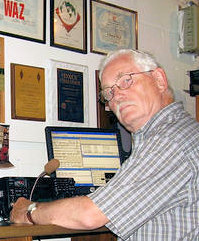 Veteran Incoming QSL Bureau Manager Dick Maylott, W2YE, SK Dick Maylott, W2YE, of Leesburg, Virginia, who managed the ARRL Incoming QSL Bureau for fourth-district two-letter prefix call signs since 1993, died unexpectedly on August 23. He was 83. Licensed in 1954, Maylott was a member of the Sterling Park Amateur Radio Club, which sponsors the QSL Bureau; the Potomac Valley Radio Club; the Loudoun Amateur Radio Group; the Quarter Century Wireless Association, and the National Capitol DX Association.
Veteran Incoming QSL Bureau Manager Dick Maylott, W2YE, SK Dick Maylott, W2YE, of Leesburg, Virginia, who managed the ARRL Incoming QSL Bureau for fourth-district two-letter prefix call signs since 1993, died unexpectedly on August 23. He was 83. Licensed in 1954, Maylott was a member of the Sterling Park Amateur Radio Club, which sponsors the QSL Bureau; the Potomac Valley Radio Club; the Loudoun Amateur Radio Group; the Quarter Century Wireless Association, and the National Capitol DX Association.







